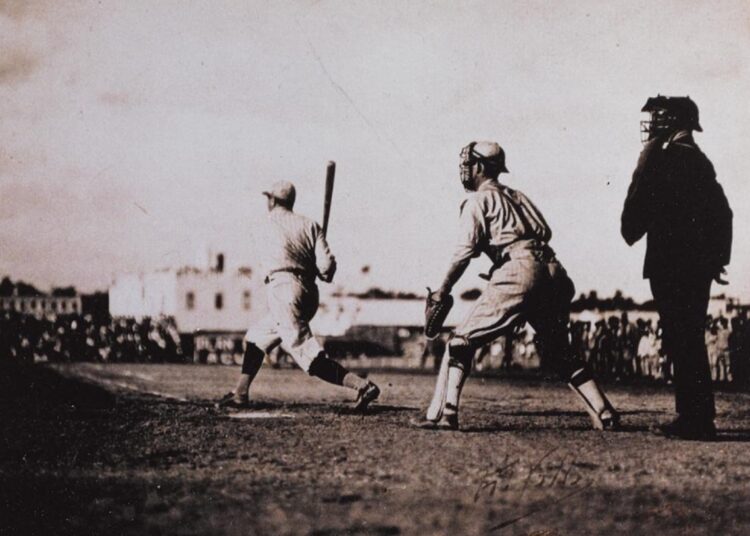Recent comparisons between the Japanese superstar Shohei Ohtani and the legendary Babe Ruth — regarding which of the two is the true “unicorn” in baseball history — reminded me that 105 Novembers ago, the Bambino was in Cuba. With his bat that seemed to measure two meters and possessed an almost prehistoric power capable of shredding the seams of the ball, George Herman Ruth arrived in Havana on Friday, October 29, 1920, aboard the steamship Governor Cobb, via Key West, with the purpose of displaying his home run crown to Cuban fans.
The economic situation resulting from the banking collapse of 1920 prevented Abel Linares — a baseball promoter and owner of the Almendares team — from taking the risky gamble of importing Major League clubs to organize his customary fall season. So he concentrated his efforts on an exhibition game between the New York Giants, a powerful team managed by John McGraw that had finished second in the U.S. League, and the two main local teams: Habana and Almendares.
One afternoon, Linares was enjoying a game between the Yankees and the Philadelphia Athletics at the Polo Grounds when a stranger in a suit approached him and handed him a card with the name John Igoe, Babe Ruth’s representative, along with an offer to bring the home run record holder onto the Giants’ road trip. Linares, a shrewd businessman, didn’t hesitate. He invited the agent to his hotel room and presented him with a box of guava jelly and Cuban cigars. “Don’t you think a country that produces such delicious things is worth visiting?” Igoe exclaimed, delighted. Over whiskeys and cigar smoke, they agreed to pay Ruth $2,000 in cash for each of the ten scheduled games. Furthermore, the host would cover travel expenses and accommodations at the Plaza Hotel for the 25-year-old player, his wife and the secretary himself.
Baseball had already become a religion on the island, and being in the presence of the sport’s icon was, without a doubt, an unmissable spectacle. “All the press, both local and U.S., has written numerous times about this magnificent slugger who has set a record difficult to beat; today the public has its first opportunity to see the marvelous ‘Babe’ in action, and now is the time to convince ourselves of what the cable news has told us and what those who have seen him say,” the Diario de la Marina prepared the ground. Almendares Park was packed with spectators eager to witness the mythical home runs. But, as the saying goes, the ball is round and comes in a square box, things would turn out differently.…
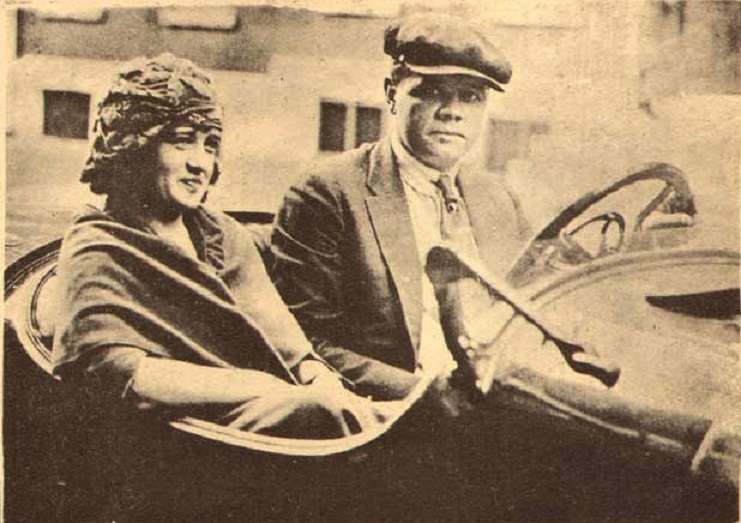
Strike 1: Havana, if you only knew
A lover of showbiz, revelry and feasting, friendly and talkative like a grown kid, Babe Ruth began his Havana adventures very early. It’s well known that he fell in love with the city, where there was no Prohibition, he could listen to good music and he signed autographs everywhere. On the very day of his arrival, in the evening, he went to the Jai Alai fronton at Concordia and Lucena. There he lost $800 betting. Before leaving the old mansion where jai alai was played, he confessed: “If you only knew, I’m thinking I like this game more than baseball.”
On Saturday the 30th, he debuted in his tiger stripes at Almendares Park against the Havana Lions, who, curiously, were distinguished by their red uniforms. By the time he joined the roster, McGraw’s Giants had already played eight games — since the 16th — against the home teams (with a record of three wins, three losses and two ties). From then on, all eyes in the stands, packed to the last seat, were on the brand-new “reinforcement,” the one the “movies” that had launched him to fame were clamoring for. That day, Babe batted fourth and played center field; although he hit a couple of extra-base hits, with two RBIs and one run scored, he couldn’t quite please his fans.
The next day, against the Almendares Blues, he seemed to break the ice by hitting a ball that looked like it would clear the fence, but it lacked height and ended up as a triple. However, pitcher Emilio Palmero, “the venomous left-hander from Guanabacoa, felt no fear upon seeing such a superb batter and, with a confidence bordering on carelessness, threw strike after strike, striking him out twice,” reported the Diario de la Marina. “When Palmero managed to strike him out with three consecutive pitches, the home plate umpire, Kiko Magrinat, called out to him in a unique way: ‘Good morning, good afternoon, and good night,’” notes Rolando Sánchez, a researcher of Cuban baseball for over 40 years.

Three days later, again against Habana, the phenomenal cleanup hitter turned out to be “a big disappointment” — wrote the Diario de la Marina — and even drew some boos. In four at-bats, he struck out three times against pitches from José Acosta (Acostica), a pitcher who compensated for his short stature with the poise of a snake charmer. “That feat by the petit pitcher,” the newspaper added, “was rewarded with long applause.”
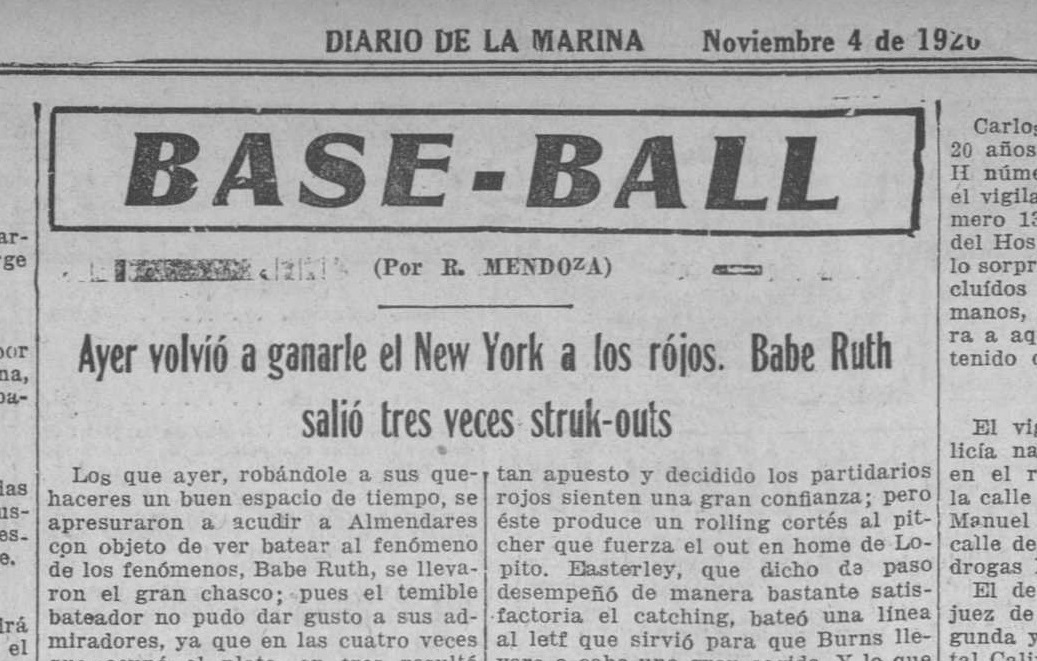
But the biggest surprise came on November 6, when — as the press highlighted — a Cuban “outshone” the Monarch. Cristóbal Torriente, from Cienfuegos, hit a double and three home runs, the last one off Ruth himself on the mound, driving in six of Almendares’ eleven runs in their victory over the visitors. The ovation was monumental: from the stands, they threw coins, bills and cigars at him; they gifted him with a gold watch and Gener cigars.
Although he was a dazzling talent, Torriente was never able to play in the Major Leagues due to racial barriers. The Bambino himself initially described him as “a ton and a half of coal in a dark basement,” and he also disliked it when the press began calling him “the Black Babe Ruth.”
Over time, however, a friendship developed. Ruth would eventually admit: “If I could take home slugger Torriente and pitcher José Méndez to my team, we’d win the pennant by the beginning of September and then go fishing.”
In short, during the Havana Tri-Ball, Ruth batted .345. His performances:
- October 30: double and triple in four at-bats. NY defeated Havana 4–3.
- October 31: 2-for-4 (triple and two strikeouts). NY shut out Almendares 3–0.
- November 3: three strikeouts against Acostica. NY defeated Havana 7–1.
- November 4: 3–2 (one double). NY routed Almendares 10–0.
- November 6: No hit in three at-bats; pitched in relief. Torriente was the hero of the 11–4 victory.
- November 7: 3–2. NY defeated Habana 8–7.
- November 8: 4–1, including his first home run, estimated at 550 feet. Almendares won 6–5.
- November 12: 0–4. Game tied at three runs suspended due to darkness.
- November 14: Two home runs. NY defeated Almendares 7–3.
Strike 2: doubly defeated in Santiago
The final game of the series in Havana was canceled due to torrential rains. Ruth received his full fee, and the tour was a resounding success: earnings were around $40,000, according to reporters. This windfall encouraged Juan Lageyre, a baseball promoter in Santiago de Cuba, who offered the Bambino $3,000 for two exhibition games in the city.
Ruth arrived in Santiago at dawn on November 20, on a delayed train. A crowd waited for him all night at the station. After settling into the centrally located Casagranda Hotel, he appeared that same day at the newly inaugurated Cuba Park — or Red Stadium — where the stands, boxes and the sun area were packed.
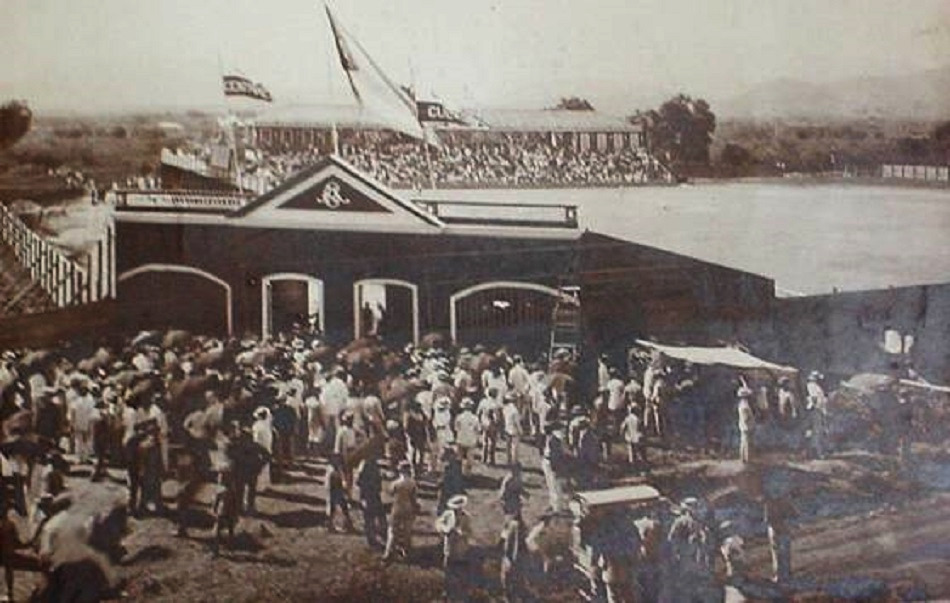
When he appeared on the field at 2:30 in the afternoon, the applause was thunderous. During batting practice, he showcased his power, and the Diario de Cuba wrote: “Babe Ruth performed phenomenal acts in his practice. Four times he hit home runs over the front fence. It can be said with certainty that no one has ever hit such phenomenal home runs on the fields of Cuba Park.”
Then began the game between the Babe Ruth team and Santiago, a local team reinforced with stars like Bartolo Portuondo, Valentín Dreke and Alejandro Oms. The indomitable team won 4-0, while the home run king couldn’t hit a single home run. He only managed a double to center field in the sixth inning. The hero was a pitcher “who had nothing going for him”: Pablo Guillén. With little velocity but surgical control, he struck out the visiting star three times.
On Sunday the 21st, the second “sensational game” was played, also before a “legion of fans.” During warm-ups, Ruth repeatedly hit home runs, some balls landing as far as San Pedro and San Félix streets. But in the game, history repeated itself: he barely managed two insignificant hits, while Santiago once again prevailed, this time 5-1.

Of his time in the city, Ruth would later tell Lageyre: “I have admired all the good things you have. Everything here is beautiful, especially the mountain panorama that surrounds the city. The people are wonderful and friendly. Oh, and your women are, without a doubt, among the most elegant in the world.” He was as much a gentleman as he was a compulsive gambler. For days, nothing else was talked about in Santiago: his visit, the photo with the bat slung over his shoulder and his off-field escapades. He left there “doubly defeated”: struck out by an unknown amateur and with “empty pockets” after losing his money at the Casagranda’s casino.
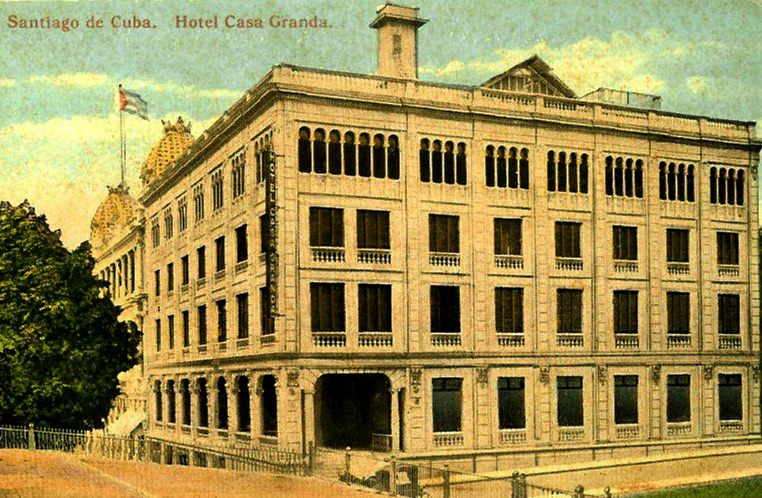
Strike 3: a true legend!
With barely 40 cents in his pocket — according to Horacio Roqueta of the Heraldo Nacional — he returned to Havana. Before leaving for the United States on November 28, he stayed two more weeks in the capital, not to play baseball, but to indulge in his dangerous hobby: gambling. Jai Alai regulars saw him lose fortunes on the sports lottery; he also gambled at the Marianao racetrack, went sightseeing and fished.
The visit was an event of international significance. “Babe Ruth is playing winter baseball in Cuba,” announced the Daily Illinois. “Reportedly, ships traveling from the United States to Havana are installing armor plating to avoid being torpedoed by missed home runs.” But the Bambino couldn’t turn the metaphor into reality. Some justified his poor performance by citing the hot weather; others, that he was eager to please his fans and swung at bad pitches.
The Evening World ran the headline: “Babe Ruth returns after a nearly home run-less tour of Cuba,” noting that “the funny thing about the trip was that Babe didn’t live up to his reputation. The locals believed he could hit a home run whenever he wanted, but he only managed three during his entire stay.”
The series was interpreted as a demonstration of Cuban baseball’s strength. The Diario de la Marina elevated the analysis to an epic, almost warlike scale: “This fact, simple at first glance, has great importance. It is the Cuban army invading the United States…the Colossus of the North crushed by the weight of our bodies. Oh, power of baseball, that makes the weak defeat the strong and allows the strong to be defeated by the weak!”
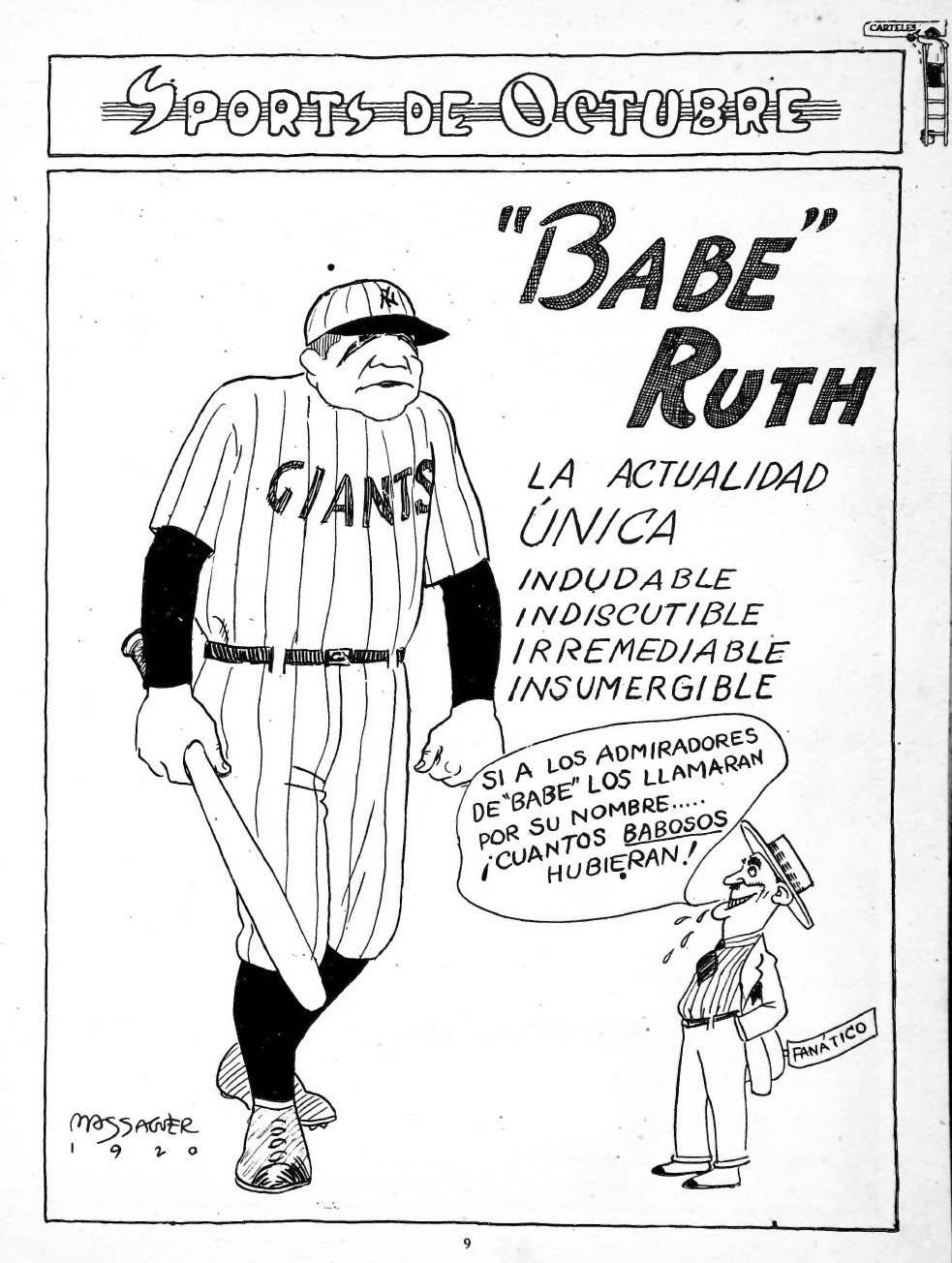
In the mid-1950s, the local customs writer Carlos Robreño continued to evoke the visit with the same iconoclastic idea: “Cuba is a country where imported idols constantly suffer harsh setbacks.” And while Ty Cobb had been struck out by Méndez and pitched out at second by Striker González, the fearsome Bambino, wearing a uniform not associated with the Yankees, saw his greatness overshadowed when Torriente — wearing the Almendares uniform — hit three home runs and a two-bagger off him in a single game.
Even so, the Cuban strikeouts were merely a colorful footnote in his career. Nothing could prevent Babe Ruth from going down in history, both on and off the field, as a true legend.

